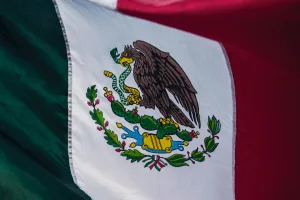When you welcome an Au Pair into your home, you gain around-the-clock childcare and expose your children to new cultures — and possibly even a new language! Living with someone from another country can help your kids absorb different customs and practice a second language while adapting to a more global perspective. If you want to raise well-rounded, culturally sensitive, and curious children, there’s no better way to do it than with an Au Pair.
If you hire an Au Pair from Spain or Mexico, you’ll likely want to ensure they feel at home with your family. You can do that by understanding their home country’s specific customs, traditions, and cultural aspects. It’s also important to avoid confusing the two cultures and potentially offending your Au Pair. So, let’s explore and discover the similarities and differences in Spain vs. Mexico culture, language, and more!
The Rich Cultures of Spain vs. Mexico
While Spain and Mexico share a language, their similarities don’t extend far beyond that. Each country has a distinct, rich culture, both globally significant and fascinating in its own right. Below we’ll explore Spain vs. Mexico: culture, etiquette, dialects, and more.
 Historical Background
Historical Background
Before we discuss the various differences between Mexico and Spain, it’s important to understand how two groups of people who speak the same language developed such different ways of life. As is often the case, the answer is in history.
Mexico was not always Mexico. Originally, native civilizations, including the Mayans and the Aztecs, inhabited the land we now know as Mexico. However, in the 1500s, a man named Hernan Cortes led a group of conquistadores (explorer-soldiers) from Spain to the land, conquered the region, and transformed it into the Spanish-speaking territory of Mexico.
Still, Mexico and Spain are separated by over 5,000 miles of land and water. So, while they share a language, they ultimately evolved into two entirely different places, each with its own traditions, dialects, cuisines, holidays, and culture.
Language and Communication
Spanish is one of the most widely spoken languages in the world. Having your children learn Spanish from an Au Pair will open up tremendous possibilities for them in travel, education, and career prospects. An Au Pair from Mexico will speak a slightly different version of Spanish than one from Spain. The variances are subtle, but they can be significant depending on the context and will influence the way your children learn to speak Spanish.
One of the most noticeable differences between Mexican Spanish and Spain’s Spanish (known as “Castilian”) is the pronunciation of the letters s, c, and z. Spanish speakers from Spain will make a “th” sound where an s, c, or z appears. For example, they pronounce “Barcelona” as “Barthelona.” Alternatively, Mexican Spanish speakers pronounce the letters s, c, or z as an “s.” So, “Zebra,” sounds like “Sebra.”
Second-person plural pronouns differ between Spain and Mexico, too. Spaniards use both the informal “vosotros,” as well as the formal “ustedes.” In Mexico, however, people do not use “vosotros,” and instead use “ustedes,” in all circumstances — without assigning any level of formality to it.
Additionally, there are many items for which Mexico and Spain have different words — too many to list here. But don’t be surprised if you use your Mexican Spanish in Spain to ask for the “remoto” (remote control) and get a confused look — it’s called the “mando a distancia” there.
These are just some of the distinctions between the Spanish spoken in Mexico vs. Spain, but as you advance in your linguistic journey, you’ll come to realize there are many more.
Cuisine and Gastronomy
When discussing Spain vs. Mexico, culture cannot be disentangled from food. Whether you welcome an Au Pair from Mexico or Spain into your home, if they’re willing to share their native recipes with you, you’re in for a culinary treat. However, you might be surprised to find that cuisine is one of the biggest differences between Spain and Mexico.
Traditional Mexican food typically includes corn (usually tortillas), beans, tomatoes, grilled or ground meat, and chilies. Mexican food can be spicy, and chilies are the building blocks for many authentic Mexican dishes. Chiles en Nogada, for example, is a traditional holiday dish consisting of chilies stuffed with meat, fruit, and nuts and smothered in a creamy walnut sauce.
Given that part of its coastline touches the Mediterranean Sea, Spanish food has a deep Mediterranean influence. Olive oil is a staple of Spanish cuisine, as are fish and legumes, and paella might be the most well-known Spanish dish. Consisting of rice simmered in broth, stock, and saffron and mixed with various meats, seafood, and vegetables, paella highlights the best Spanish ingredients from the land and sea.
 Festivals and Celebrations
Festivals and Celebrations
Both Mexico and Spain have vibrant celebrations throughout the year, honoring important moments in their respective histories or central parts of their cultures. If you love a good parade or street carnival, you can find it in Spain and Mexico. Differences in what is celebrated and why, however, do exist.
If you were to visit Spain during the month of March, you would probably encounter stunning sculptures being lit on fire in the streets as part of a festival called the Valencia Fallas. The festival has its roots in the Spanish tradition of making bonfires by lighting furniture on fire to celebrate the arrival of Spring. Today, it’s a colorful and spectacular multi-week festival that UNESCO has added to its intangible cultural heritage of humanity list.
In early November, the dead come to life in Mexico! It’s Día de los Muertos, one of the most significant festivities in Mexican culture. During this holiday, people honor loved ones they’ve lost by creating beautiful altars filled with the deceased individual’s favorite foods. When discussing Spanish culture vs. Mexican culture today, many anthropologists attribute Día de los Muertos to both countries because Spain has adopted the holiday.
These are just two of the more famous celebrations in Mexico and Spain, but almost any time of year, streets in both countries are abuzz with music, people, and artwork honoring important moments in each of their histories.
Social Etiquette and Customs
Speaking the same language isn’t the only way to connect to people from other cultures. Understanding social norms is also integral to forming meaningful connections, and showing respect. So, are Mexican and Spanish cultures the same in regard to social norms? Not quite.
Rules surrounding punctuality are known to be slightly different between the two countries. In Spain, it’s widely understood that the timing for social and business encounters is relaxed. It’s not out of the ordinary for a business or personal engagement to begin after the stated start time. However, in Mexican culture, being on time for business matters is considered respectful. Punctuality for social gatherings can be a bit more relaxed in Mexico though — similar to how it is in Spain. This is a notable difference between Spain and Mexico to remember. Otherwise, you might think a tardy Spanish dinner guest is rude, when, in fact, they’re just following the customs they’re familiar with.
Mexicans are known for being very warm and informal when greeting each other — whether they’re saying hello to a shopkeeper or an old friend. On the other hand, Spaniards are often more formal with anyone with whom they don’t have a close relationship. These distinctions in Spanish vs. Mexican culture are important to be aware of, to avoid any social misunderstandings.
Find an Au Pair with Go Au Pair
Foster an invaluable cultural exchange in your home by welcoming an Au Pair to live with you and your family. It’s one of the most effective and enjoyable ways to learn foreign customs and a new language while enjoying the many benefits of live-in childcare. If raising culturally aware and bilingual children is important to you, there’s no better way to do it than to invite an Au Pair into your life.
So, whether you’re looking to find Au Pairs from Spain, Mexico, or another part of the world, sign up to be a host family with us at Go Au Pair and invite international enrichment into your home. Contact us today to get started!



 Historical Background
Historical Background Festivals and Celebrations
Festivals and Celebrations